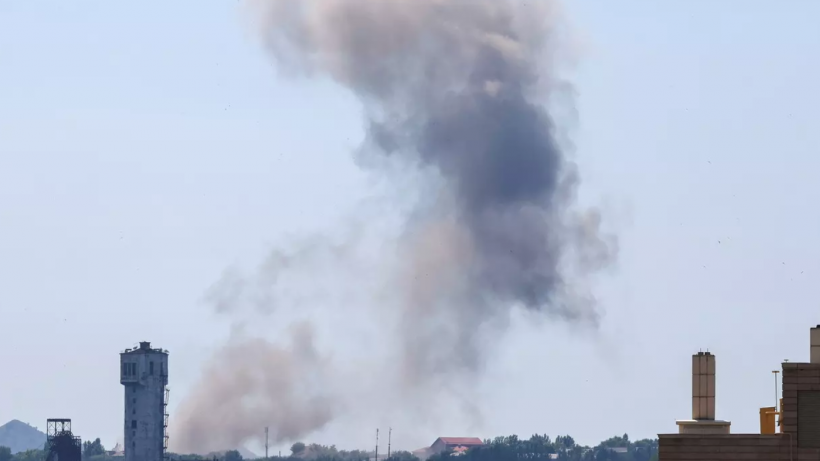The number of people living in poverty in fragile and conflict-affected countries is estimated to reach 360 million by 2030. Lifting people out of poverty in places affected by low government capacity, poor infrastructure and high political and economic risk and uncertainty is a critical challenge and key to addressing global problems such as conflict, migration, terrorism and trafficking. Tackling this challenge is even more pressing in the face of looming food insecurity due to the worsening climate crisis and the soaring food and fuel prices brought on by the war in Ukraine.
I am the convenor of the Council on State Fragility, which brings together prominent global leaders who are passionate about addressing the challenges of state fragility. The Council recognizes private sector growth and the jobs, incomes, goods and services it provides as essential for countries to move out of fragility. Development finance has an especially central role in catalyzing this growth in fragile countries. With this view, the Council is calling for development finance actors to ignite solid growth in fragile countries through increased investment.
Critical catalyst
In fragile countries, conflict, corruption and weak institutions constrain firm productivity. Moreover, the financial viability of investments in firms is undermined by small project sizes and high overhead costs. It is further complicated by environmental, social and governance standards that are insensitive to the realities of investing in fragile contexts.
Critically, development finance enables financing and de-risking of investments. Development Finance Institutions (DFIs), in particular, are needed to materialize investments with the potential to benefit whole markets, such as those enabling development of resilient infrastructure and energy access and digital economies that can link farmers and small businesses to markets and finance.
The higher perceived risk of fragile environments means that private investors are often unlikely to venture investments there without the backing of concessionary funding provided by DFIs. Donors, private investors and operators and the governments and civil society groups of fragile countries also have vital roles in enabling development finance to achieve development objectives.
Yet, DFIs and other development finance stakeholders are often hindered by internal constraints. For example, internal frameworks within DFIs limit their ability and willingness to deploy high-risk finance and mobilize critical resources such as capital commitments and on-the-ground staff. Their investment teams continue to emphasize the volume of deals signed rather than the development or peace-building potential of investments, creating a strong bias towards investing in larger and easier markets.
Additionally, DFI shareholders often do not equip DFIs with the tools they need to be more effective: adequate resources; clear support for taking on higher operational and financial risk; and less constrained use of concessional funding and more realistic risk-return thresholds.
 Population in extreme poverty, fragile states vs. rest of the world. Image: World Data Lab
Population in extreme poverty, fragile states vs. rest of the world. Image: World Data Lab
A 360-degree shift
To truly scale up investments in fragile contexts, change is needed from DFIs, their shareholders, private sector entities and the governments and civil society groups of fragile countries. Without an all-system shift, improved outcomes are unlikely. Specifically, the Council on State Fragility is calling for these actions:
- DFIs need to scale up their resources and in-country staff in fragile countries; take higher risks; accept longer time horizons and lower returns on investments; sharpen their peace and conflict lenses; reward staff for developing projects with development and peace-building potential; collaborate more with other DFIs; engage in improving the broader investment environment with governments of fragile countries and other development partners.
- DFI shareholders need to match their messages of increased support to fragile contexts with the targets they set for DFIs, allow them to adapt operational and investment policies to suit fragile contexts and stand behind them when challenges arise.
- Governments of fragile countries must implement effective policy and regulatory changes to create more conducive business and investment environments to facilitate investments from DFIs and private sector investors. Replicating and tailoring regulatory models, contract designs and risk-sharing arrangements successful elsewhere can simplify this significant task.
- Private sector investors and operators should help scale up investments in fragile contexts. Private capital, expertise, and business models are needed to help DFIs and others address constraints and successfully operate in high-uncertainty settings.
- Civil society groups and other non-governmental organizations need to strengthen accountability, consultative processes and conflict risk and mitigation analyses. Their active participation ensures: that peace and conflict analyses are accurate, risk mitigation plans are actionable and effective, projects are implemented in a way that does not aggravate tensions or conflict through the unequal distribution of benefits and that rights and standards are adhered to in projects.
Development finance efforts, spearheaded by DFIs, are needed to ignite private sector growth in fragile contexts, bringing needed jobs that can permanently move people out of poverty. When people are gainfully employed, they have fewer reasons to be active in conflict.
As everyone in the economy prospers, a broad-based commitment to peace and stability becomes possible.
This blog was originally published on World Economic Forum’s Agenda blog.


